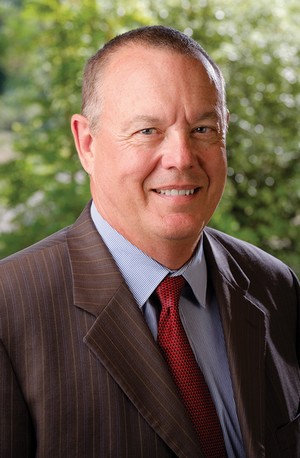“A Billion Trees”

One of the challenges I was told I would face when I started at Scion was that despite being the third largest export revenue earner forestry was never talked about by government ministers. Well that has certainly changed, and I believe the time is right. Science and technology innovations, global trends for renewable and sustainable outcomes and local problems are opening up real opportunity for forests, wood products and bioproducts.
This is an opportunity to redesign the New Zealand landscapes for much enhanced environmental outcomes (such as erosion control, water quality, carbon absorption) and improved societal outcomes while delivering a potentially large increase in economic contribution ($10 billion today to $100 billion in the future). The exciting factor is that this will happen in our regions and compared to some current models the forestry opportunity will rejuvenate and invigorate our small local communities.
So, what is behind this change in focus and realisation of the huge and transformation opportunities from trees as a renewable resource? In no particular order I can list many developments and trends that are bringing forestry out of the shadows:
- A focus on the health of our freshwater environments and actions to clean up our lakes and waterways.
- Companies committing to carbon reduction programmes and achievement of CarboNZero certification.
- Growing interest in indigenous trees with some Māori forest owners wishing to diversify species and, in some cases, re-establish land in species other than radiata pine, such as kauri, tōtara and beech.
- Māori wanting to invest in trees and processing are becoming key enablers.
- Science that allows us to select trees and their traits in a third of the time previously.
- Precision forestry through a systems-wide forest management approach to greatly improve productivity.
- Mixed land use at different scales and multi-layered forests, such as under cropping, to increase value. For example, planted forests can provide an ideal environment for growing the shade-loving herb ginseng.
- A focus on regional economic development and action plans that identify forestry and wood processing as best opportunities for growth.
- Revival of manufacturing in regions characterised by smaller scale high-value operations enabled by digital technologies, smart connected products and automation across agriculture, horticulture and forestry sectors.
- R&D in wood products and wood-derived materials has opened up markets in construction and high-value manufacturing through increased cost effectiveness and performance of processed wood.
- The international building design industry has ‘discovered’ wood and engineered wood products that deliver superior performance in structural, earthquake, fire, thermal, aesthetic and environmental properties.
- Recognising that trees are our oil wells of the future. We have shown that virtually everything we can make from petrochemicals today we can make from trees tomorrow.
- Bioproducts made from renewable natural sources and primary-industry processing residues, such as bioplastics and bioenergy, are becoming fast-growing segments of industries wanting their products to be recyclable and/or biodegradable.
- Global consumer trends to sustainable and renewable products are evident in big brands (like Ikea, Lego, Starbucks, Philips, Toyota) that are leading the charge with substantial corporate sustainability goals, and many more brands are joining the wave.
- The United Nations 17 Sustainable Development Goals include goals such as clean water, climate action, life on land, sustainable cities and communities, affordable and clean energy that are clearly linked to the direct impact from forests and forest products. Just a month ago the UN Food and Agriculture Organisation and partners agreed that sustainable wood use contributes to achieving all 17 goals.
- The amenity value of forests is enjoyed by tourists and kiwis who recreate among trees, and this indirectly benefits local economics and community wellbeing.
As I stated earlier, now is the time to look at the landscapes we want for New Zealand in the future and to rejuvenate our regions. The picture in my mind looks very exciting. The possible outcomes from planting trees is truly great and for these reasons we need to make sure that we plant “The Right Trees in the Right Places for the Right Purposes”.
I welcome your thoughts on this topic and any other matters raised in this issue of Scion Connections.

Dr Julian Elder
Chief Executive
For further information contact
Dr Julian Elder
